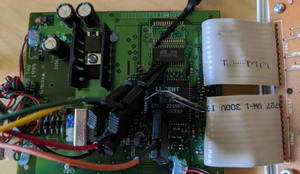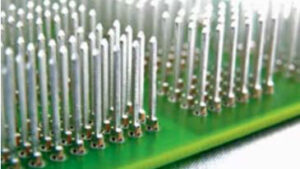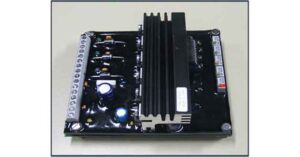Hardware Reverse Engineering: A Comprehensive Guide
Hardware Reverse Engineering is a powerful tool for understanding the inner workings of electronic hardware. It involves taking apart an existing device or system and analyzing its components to determine how it works. This comprehensive guide will explore the benefits and potential applications of hardware reverse engineering, as well as discuss the tools and techniques used in the process.

What is hardware reverse engineering?
Hardware reverse engineering is the process of taking apart a device to analyze its components, design, and structure in order to understand how it works. It allows engineers to deconstruct an existing piece of hardware in order to better comprehend its architecture, capabilities, and features. By understanding the inner workings of a device, hardware reverse engineering can provide invaluable insights into how to improve or modify the device or even develop completely new ones. With hardware reverse engineering, you can create a precise replica of the device and identify any flaws or weaknesses in the design. This can be especially beneficial when seeking to repair a broken device, extend its functionality, or build a product based on the same design.
The benefits of hardware reverse engineering
Hardware reverse engineering is a process that involves taking a physical device apart to gain an understanding of its design, components, and circuitry. It allows engineers to gain insight into how a system works, identify potential vulnerabilities, improve product development and security, as well as create better products and services. Here are just some of the benefits of hardware engineering:
- Improved Product Development: By understanding the design of the system and its components, engineers can develop more efficient and effective solutions. This may involve creating new designs that can be implemented in a shorter time frame or reducing costs by improving existing designs.
- Enhanced Security: Analyzing the system’s components and circuitry can reveal any potential security issues that could be exploited by malicious actors. This allows companies to close those vulnerabilities before they can be exploited.
- Cost Savings: In many cases, the cost of repairing or replacing a system can be greatly reduced with hardware engineering. This is because engineers are able to diagnose and fix issues more quickly than if they had to wait for manufacturer support.
- Increased Efficiency: Hardware reverse engineering can lead to a better understanding of how a system works. This allows for improved optimization of operations, resulting in a faster response time and increased productivity.
- Reverse Engineering of Unknown Systems: There are many instances where engineers need to reverse engineer unknown systems. This could include analyzing obsolete or outdated devices or working with foreign manufacturers who do not provide documentation.
Overall, hardware reverse engineering provides many benefits to businesses and engineers alike. With the right tools and knowledge, it is possible to gain a deeper understanding of how a system works, identify potential security issues, save money, increase efficiency, and reverse engineer unknown systems.
The challenges of hardware reverse engineering
Hardware reverse engineering can be a difficult and time-consuming process, and it presents a unique set of challenges. First and foremost, most devices are protected by anti-tamper measures that must be overcome before any reverse engineering can take place. Additionally, the actual process of disassembling a device to identify its components and understand how they interact is labor-intensive and requires a deep understanding of both the hardware and software involved.
On top of this, the data gathered during reverse engineering is often incomplete or obfuscated. This makes it difficult to understand how the device works and further complicates the analysis process. Finally, the sheer amount of data generated by reverse engineering can be overwhelming and require specialized tools and processes to analyze it.
All of these challenges mean that hardware engineering is not something that should be taken lightly, and it requires significant effort and expertise in order to successfully complete.

The future of hardware reverse engineering
The field of hardware engineering has evolved rapidly over the past decade and shows no signs of slowing down. With the proliferation of IoT devices, many companies are looking for ways to gain insights from their hardware to help them better understand how they work and how they can be improved. This trend is likely to continue as more IoT devices enter the market and the need for hardware reverse engineering grows.
At the same time, hardware reverse engineering is becoming increasingly important in areas such as cybersecurity, as companies look for ways to protect their systems from malicious attacks. As attackers become more sophisticated, hardware engineering is one of the few techniques that can give organizations the insight they need to stay ahead of the curve.
Overall, the future of hardware reverse engineering looks bright, with a growing demand for skilled professionals who can understand and manipulate hardware systems. With new technologies and advancements in security, it’s likely that this field will continue to evolve and offer exciting opportunities for those willing to take on its challenges.
HARDWARE REVERSE ENGINEERING TOOLS
When it comes to hardware reverse engineering, having the right tools is essential. There are a number of different tools available for use in hardware engineering projects, from disassemblers and decompilers to debugging tools. Each of these tools serves its own purpose, and having a wide range of tools to choose from can be beneficial.
One of the most popular tools for hardware reverse engineering is a disassembler. A disassembler is a program that reads binary code and translates it into assembly language instructions. This makes it easier for engineers to examine the inner workings of the device.
Decompilers are also an important tool in hardware engineering. Decompilers take the output from a disassembler and convert it into source code. This source code can then be studied in detail, which can help engineers find security vulnerabilities and design flaws.
Debugging tools are also important when reverse engineering hardware. These tools help engineers identify bugs in the system and provide information on how they can be fixed.
Debugging tools are essential for ensuring that the device is secure and functioning properly.
Finally, It requires an in-depth understanding of the hardware itself. Knowing what each component does and how it interacts with the rest of the system is key for successful reverse engineering projects. To facilitate this, engineers may use a variety of tools such as logic analyzers and oscilloscopes.
In conclusion, having the right tools for hardware engineering is critical for a successful project. Disassemblers, decompilers, debugging tools, and other types of hardware analysis tools are all important for identifying security vulnerabilities and design flaws in devices. By having a comprehensive set of tools at their disposal, engineers can ensure their projects are successful.
EMSxchange Enables you to select a Printed Circuit Board, PCB Assembly, cable & wire harness assembly, and box-build suppliers meeting your Required Electronic Manufacturing Capability, capacity, and Certification Criteria from a global Electronic contact manufacturer base.
EMSxchange takes complete responsibility and ownership for your electronic manufacturing process and all its deliverables from contract manufacturing supplier selection to manufacturing to quality inspection to shipment and delivery to your door.
EMSxchange Electronic Manufacturing Partners Profile includes:
Argus Systems (AESPL) – PCB, PCBA, Cable Assembly, Box Build, Testing.
CerraSystems Inc – HDI PCB, Rigid Flex PCB, RF PCB




